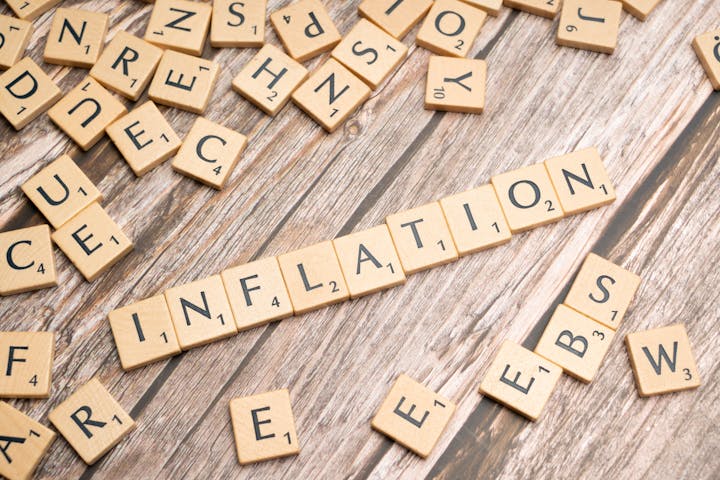Germany, Europe’s economic powerhouse, is facing a significant challenge as its GDP experiences a notable decline. For 2021, forecasts suggest a growth rate of only 3%, marking a stark contrast to the robust performance seen in previous years. This downturn raises questions about the underlying factors at play and what it means for both citizens and the broader European economy. As we delve into this topic, we’ll explore the contributing elements behind this decline and examine how Germany plans to navigate these turbulent waters while looking ahead towards potential recovery. https://finanzasdomesticas.com/el-pib-de-alemania/
Factors contributing to the decline
Several factors have contributed to Germany’s GDP decline in 2021. The ongoing effects of the COVID-19 pandemic loomed large. Lockdowns and restrictions disrupted businesses across sectors, particularly hospitality and retail.
Supply chain issues also played a significant role in this downturn. Global shortages of materials hampered production processes, affecting manufacturing output. Without essential components, factories faced delays and reduced capacity.
Moreover, inflationary pressures started creeping into the economy. Rising energy prices squeezed consumers’ disposable income while companies struggled with increased operational costs.
Uncertainty surrounding international trade agreements added further complications. Trade tensions impacted export-driven industries that are vital for Germany’s economic health.
These intertwined challenges created a complex landscape for growth prospects this year.
Comparison with previous years’ GDP growth
Germany’s GDP growth has experienced significant fluctuations in recent years. In 2019, the economy was robust, boasting a growth rate of around 0.6%. This performance set high expectations for subsequent years.
However, the onset of the pandemic in 2020 marked a dramatic downturn. The country saw an unprecedented contraction of approximately 4.6%, reflecting global economic challenges amid lockdowns and restrictions.
As Germany navigated through recovery phases in early 2021, forecasts indicated only modest growth potential at about 3%. This stark contrast highlights ongoing struggles compared to pre-pandemic levels.
Economic uncertainty remains prevalent due to supply chain issues and inflationary pressures. As businesses adapt, assessing these shifts is crucial for understanding future trajectories within Europe’s largest economy.
Impact on the German economy and its citizens
The decline in Germany’s GDP is felt across various sectors of its economy. Businesses are struggling with reduced consumer spending and uncertainty about the future. Many small enterprises, often referred to as the backbone of the economy, face dire challenges.
Unemployment rates have started to tick upwards. Families are anxious about job security and financial stability. This creates a ripple effect on local communities, leading to decreased investments in education and infrastructure.
Citizens are witnessing changes in their daily lives too. From rising prices at supermarkets to limited choices for leisure activities, economic contraction affects everyone differently.
Moreover, public services may suffer from budget constraints. Citizens might find longer wait times for healthcare or a slowdown in essential projects like public transport upgrades.
This climate of uncertainty breeds concern among citizens who rely on steady growth for their livelihoods and aspirations.
Steps taken by the government to stimulate growth
The German government has rolled out a series of measures aimed at revitalizing the economy. One significant initiative is the implementation of substantial fiscal stimulus packages. These packages are designed to boost consumer spending and support struggling sectors.
Additionally, investment in infrastructure projects has been prioritized. By modernizing roads, railways, and digital networks, Germany aims to enhance productivity and create new jobs.
Support for businesses affected by the pandemic has also been crucial. Grants and loans have been made available to ensure that small and medium-sized enterprises can weather economic uncertainties.
Furthermore, efforts to promote green technology are on the rise. The transition towards sustainable energy not only addresses climate concerns but also opens up new avenues for economic growth.
These actions reflect a comprehensive strategy focused on fostering resilience within Germany’s economy while laying the groundwork for future prosperity.
Predictions for future GDP growth in Germany
Looking ahead, economists are cautiously optimistic about Germany’s GDP growth. Emerging trends in green technology and digitalization could provide significant boosts to the economy.
Investments in renewable energy sources might not only create jobs but also position Germany as a leader in sustainable practices. This shift is essential for meeting climate goals while stimulating economic activity.
Moreover, recovery from the pandemic will play a crucial role. As businesses reopen and consumer confidence rebuilds, spending is expected to increase gradually.
Trade relations with neighboring countries may improve too, fostering exports which have been vital to Germany’s economy historically.
However, potential global uncertainties loom large on the horizon. Geopolitical tensions or supply chain disruptions could dampen these positive forecasts if they arise unexpectedly.
As such, monitoring key indicators will be essential for understanding how quickly and robustly Germany can bounce back economically.
Conclusion: What this means for Germany and the global economy
Germany’s current economic landscape raises significant questions about its future. A GDP growth forecast of only 3% in 2021 marks a stark contrast to the robust performance seen in previous years. This decline is not merely an isolated event; it reflects broader global trends and challenges. https://finanzasdomesticas.com/el-pib-de-alemania/
For Germany, this situation means navigating increased uncertainty. Citizens may feel the strain as job security wavers and investment slows down. The ripple effects could extend beyond national borders, impacting trade relationships and global markets.
As Germany works through these challenges, attention will shift towards government strategies aimed at spurring growth. These efforts can shape both domestic recovery and international economic stability.
The implications are multifaceted—investors will keep a close watch on how Europe’s largest economy adapts to evolving conditions. The interplay between local policies and global demand remains crucial for predicting future developments, making this an important period for understanding not just Germany’s economy but also its role within the interconnected world market.
The unfolding narrative surrounding German GDP offers valuable insights into resilience amid adversity while reinforcing the need for adaptive strategies that meet both immediate needs and long-term goals across economies worldwide.




